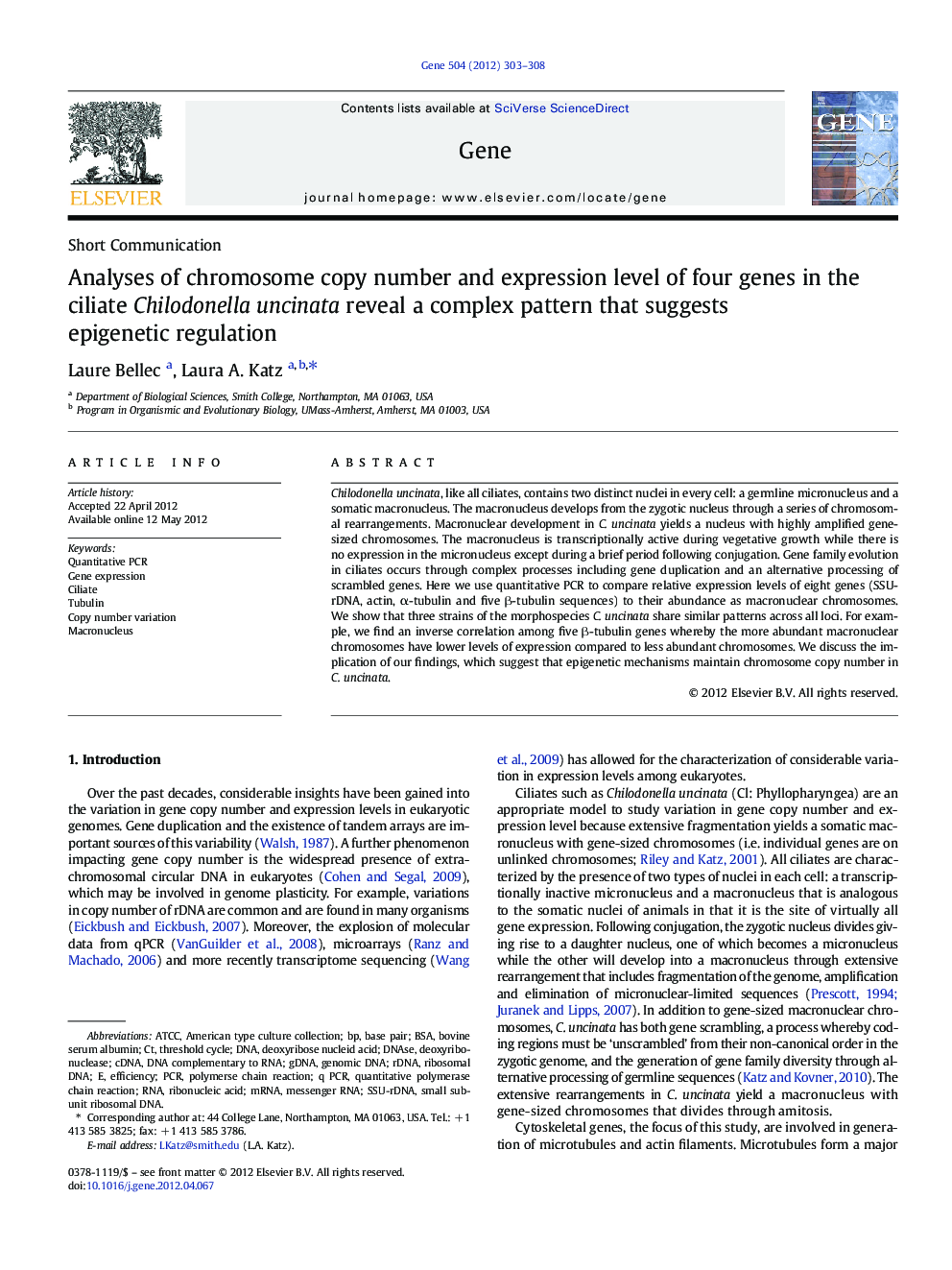| Article ID | Journal | Published Year | Pages | File Type |
|---|---|---|---|---|
| 2817834 | Gene | 2012 | 6 Pages |
Chilodonella uncinata, like all ciliates, contains two distinct nuclei in every cell: a germline micronucleus and a somatic macronucleus. The macronucleus develops from the zygotic nucleus through a series of chromosomal rearrangements. Macronuclear development in C. uncinata yields a nucleus with highly amplified gene-sized chromosomes. The macronucleus is transcriptionally active during vegetative growth while there is no expression in the micronucleus except during a brief period following conjugation. Gene family evolution in ciliates occurs through complex processes including gene duplication and an alternative processing of scrambled genes. Here we use quantitative PCR to compare relative expression levels of eight genes (SSU-rDNA, actin, α-tubulin and five β-tubulin sequences) to their abundance as macronuclear chromosomes. We show that three strains of the morphospecies C. uncinata share similar patterns across all loci. For example, we find an inverse correlation among five β-tubulin genes whereby the more abundant macronuclear chromosomes have lower levels of expression compared to less abundant chromosomes. We discuss the implication of our findings, which suggest that epigenetic mechanisms maintain chromosome copy number in C. uncinata.
► Copy number is inversely related to expression level in some gene families. ► Copy number does not predict expression level for protein-coding genes. ► Epigenetics drives chromosome copy number in the ciliate Chilodonella uncinata. ► Somatic genome content is regulated by epigenetic mechanisms in eukaryotes.
